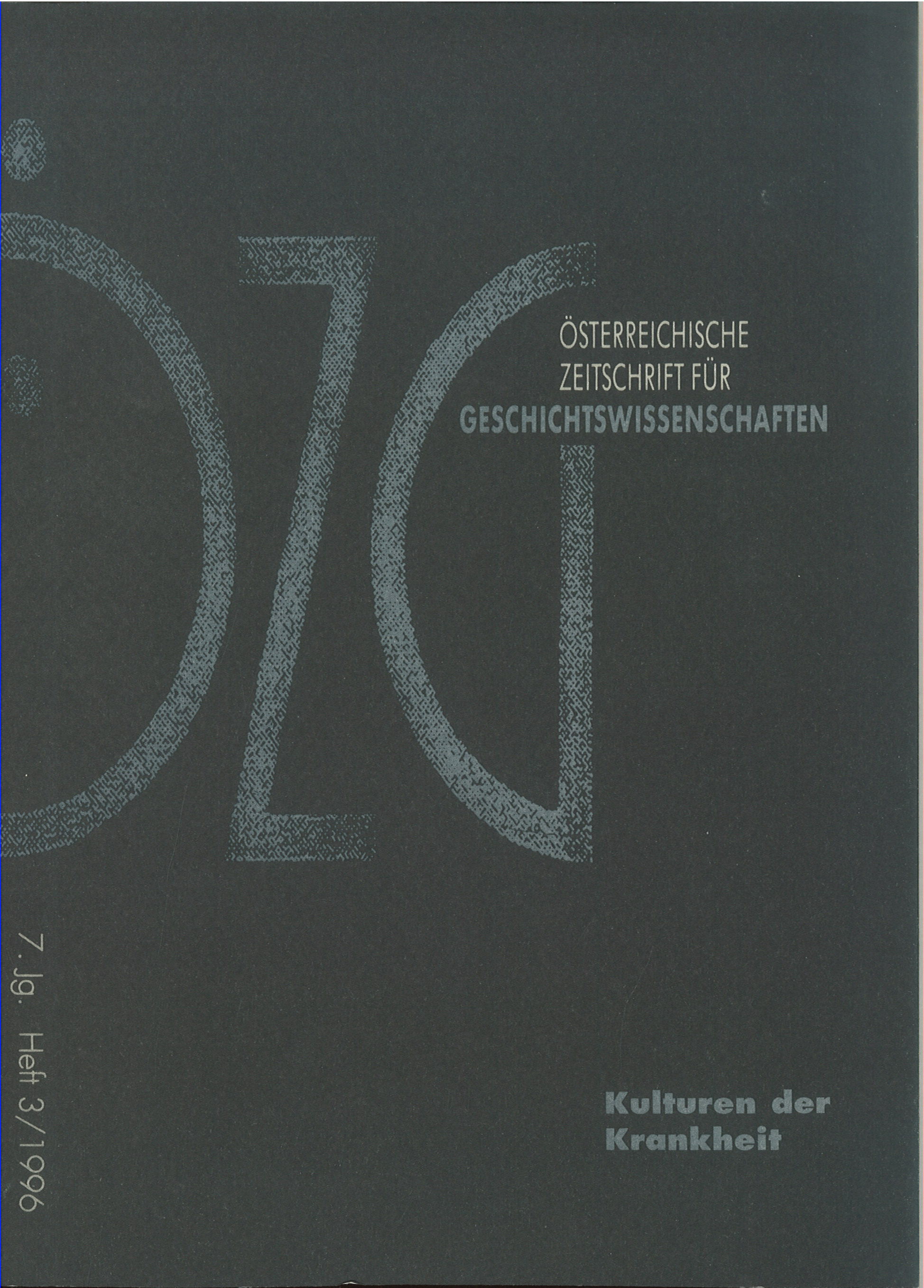Zur Regulation gefährdeten Lebens
Strategien und Modelle der Tuberkulosebekämpfung 1880–1910
DOI:
https://doi.org/10.25365/oezg-1996-7-3-4Abstract
When looking at the discussion surrounding the disease tuberculosis, it is possible to identify a crucial shift in medical reasoning at the end of the nineteenth century, as regards its modes of perception, its subjective content, its social location and also the positioning of the medical gaze. Beginning with the implementation and experience of the model „Volksheilstätten“ (sanatoria for the lower classes), for which there was a strong demand, there gradually emerged a critical evaluation of the model's ability to fight tuberculosis. The problems posed in this context center on the workings of a regulating ratio: An individual ratio confronted with the global risk from the disease and a universal strategic ratio which evaluates tactics in fighting the illness. For medicine ,care of the self’ and gouvernementalite become topical. Through the process of pedagogisation and the hygienicisation of the body of the population, new techniques of medical politics emerged as a process leading from the understanding of individual lives and life-styles to the constitution of a complex of knowledge relating to the social and to techniques of ,caring’.


